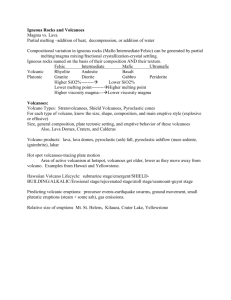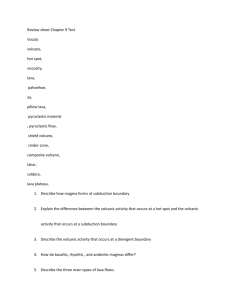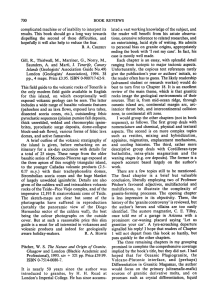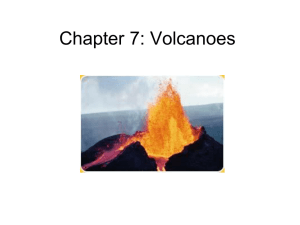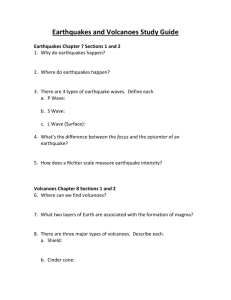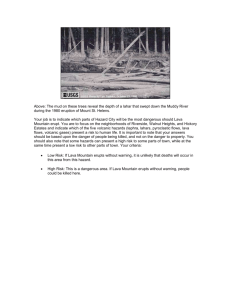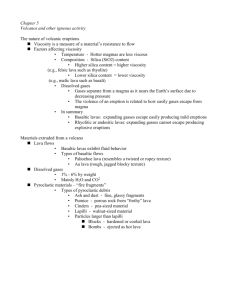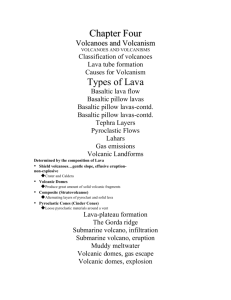Name Date Period ______ Reading Guide 13.2 Volcanic Eruptions
advertisement
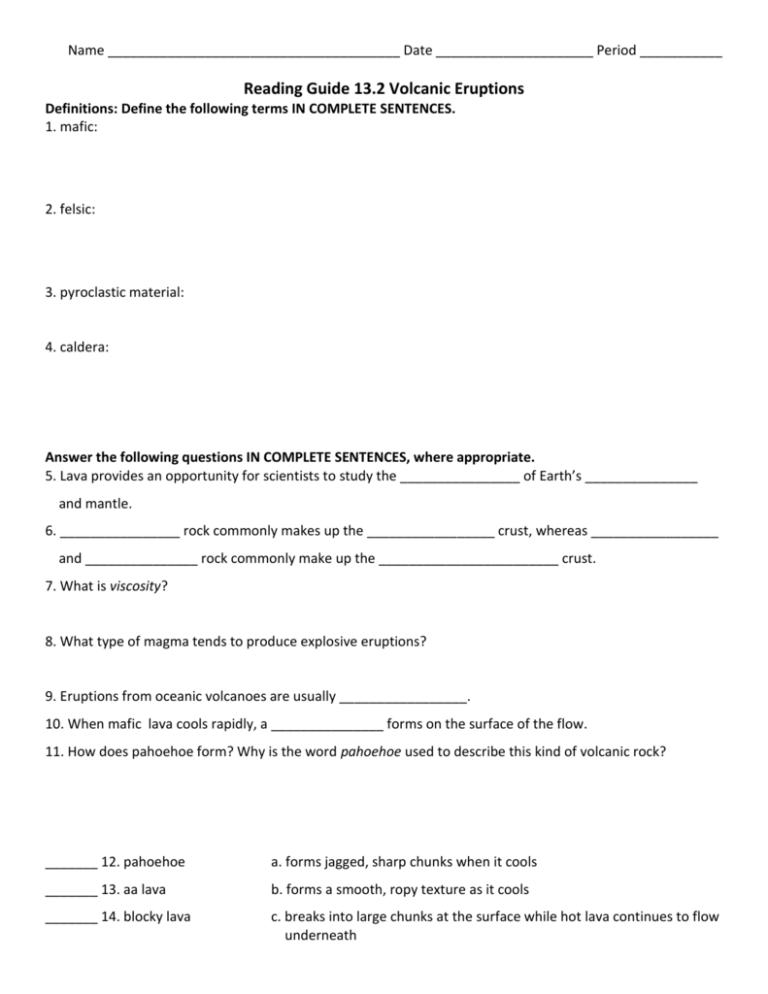
Name _______________________________________ Date _____________________ Period ___________ Reading Guide 13.2 Volcanic Eruptions Definitions: Define the following terms IN COMPLETE SENTENCES. 1. mafic: 2. felsic: 3. pyroclastic material: 4. caldera: Answer the following questions IN COMPLETE SENTENCES, where appropriate. 5. Lava provides an opportunity for scientists to study the ________________ of Earth’s _______________ and mantle. 6. ________________ rock commonly makes up the _________________ crust, whereas _________________ and _______________ rock commonly make up the ________________________ crust. 7. What is viscosity? 8. What type of magma tends to produce explosive eruptions? 9. Eruptions from oceanic volcanoes are usually _________________. 10. When mafic lava cools rapidly, a _______________ forms on the surface of the flow. 11. How does pahoehoe form? Why is the word pahoehoe used to describe this kind of volcanic rock? _______ 12. pahoehoe a. forms jagged, sharp chunks when it cools _______ 13. aa lava b. forms a smooth, ropy texture as it cools _______ 14. blocky lava c. breaks into large chunks at the surface while hot lava continues to flow underneath 15. Why does felsic lava tend to explode and throw pyroclastic material into the air? 16. What are the two ways pyroclastic materials form? 17. Pyroclastic particles less thank 2 mm in diameter that mostly fall on the land that immediately surrounds the volcano are called ____________________ __________. 18. Pyroclastic particles less than 0.25 mm in diameter that are so small they might travel around the Earth in \ the upper atmosphere are called ______________________ ______________. 19. Large pyroclastic particles less than 64 mm in diameter that generally fall near the vent are called ___________________, a name taken from a Latin word meaning “little stones”. 20. Large clots of lava thrown out of an erupting volcano while red-hot, that spin through the air, cool, and develop a round spindle shape are called ______________________ ________________. 21. The largest pyroclastic particles, which form from solid rock blasted from the volcano’s vent, are called _____________________ __________________. 22. How do volcanic cones form? 23. What are the 3 main types of volcanic cones? 24. What is a crater? 25. What are the 3 steps that most often occur in the formation of a caldera? 26. What are 3 causes of small earthquakes that could signal a volcanic eruption? 27. What are two problems scientists face in using a volcano’s past behavior to predict a future eruption?


